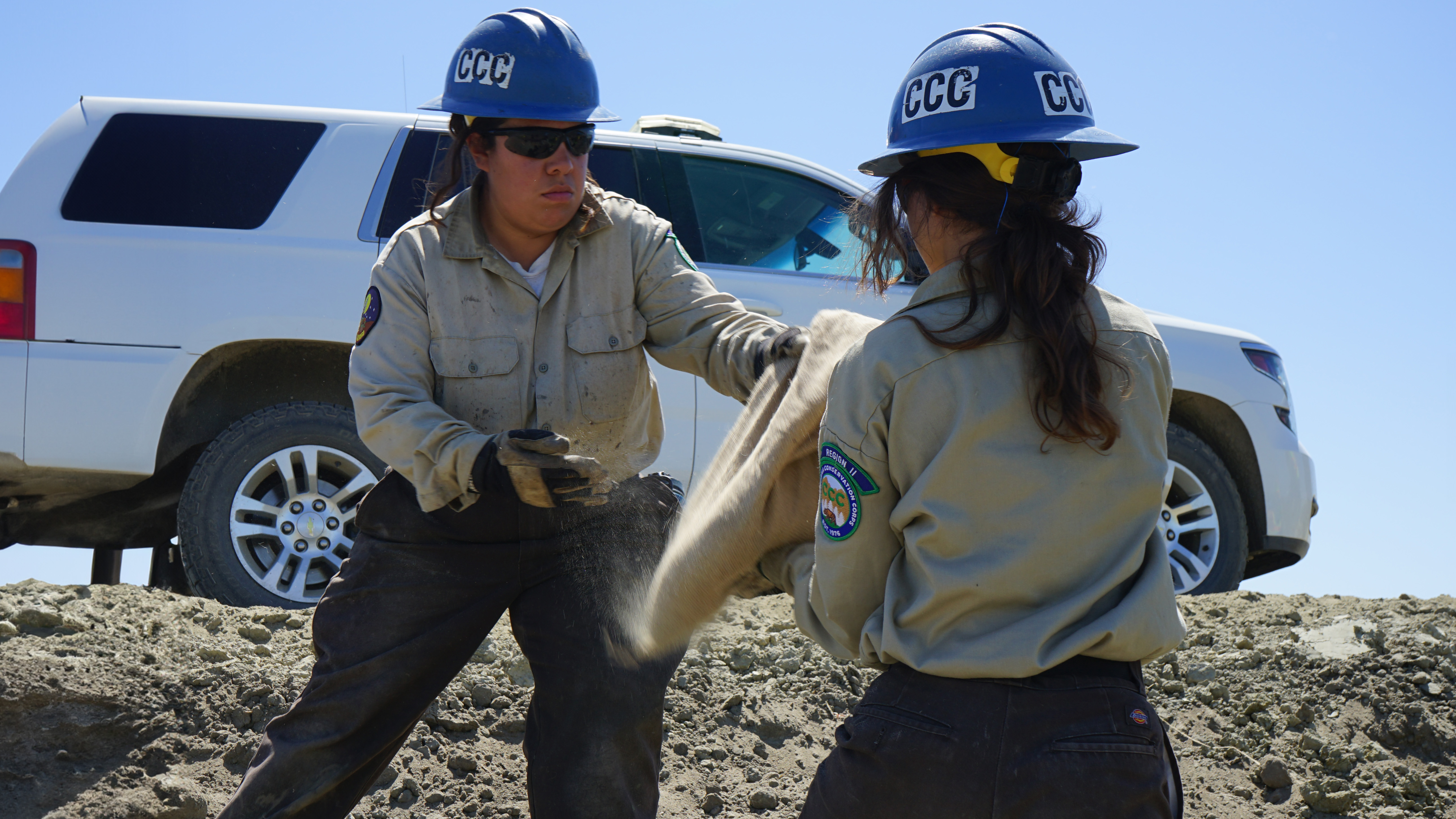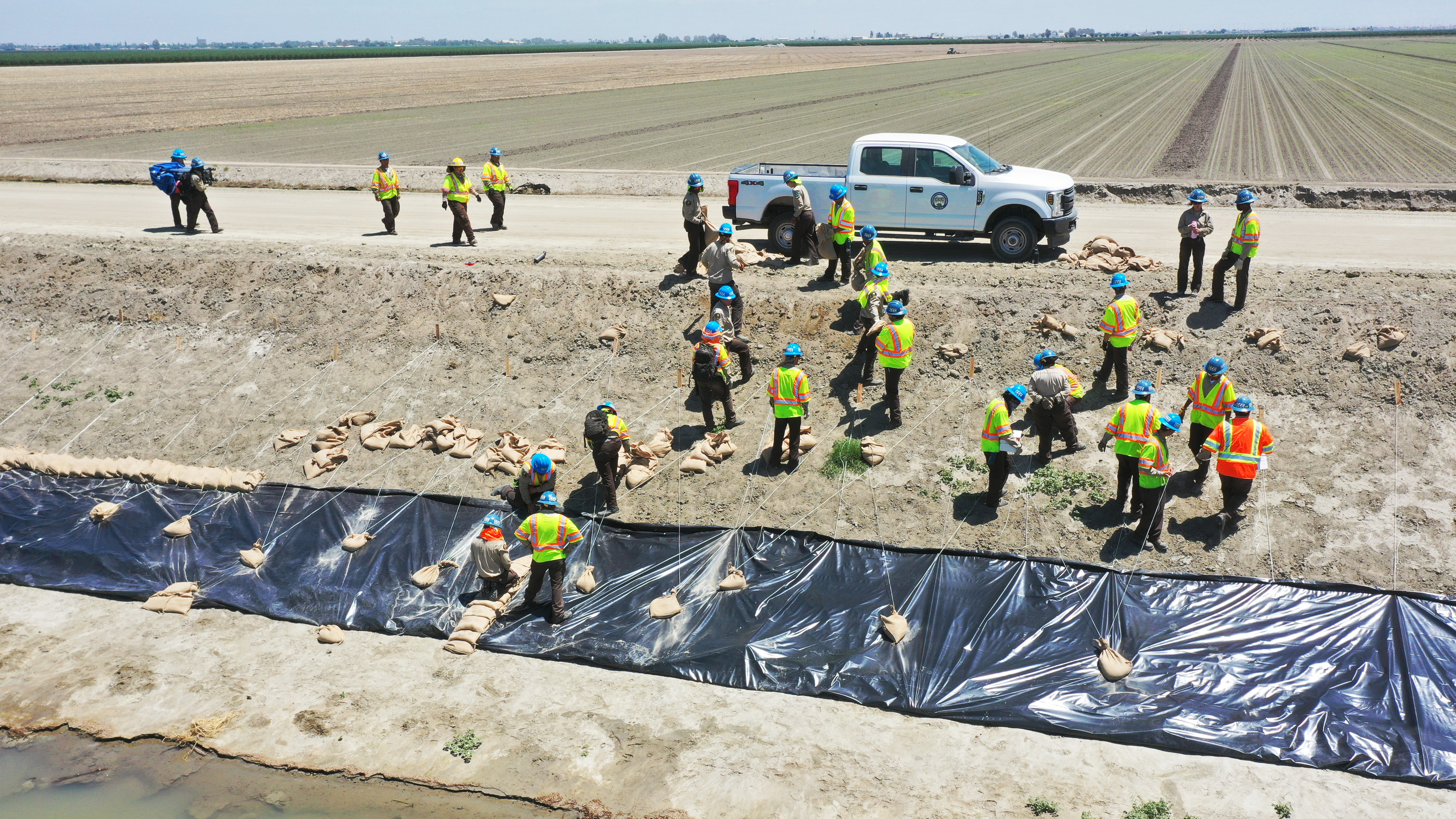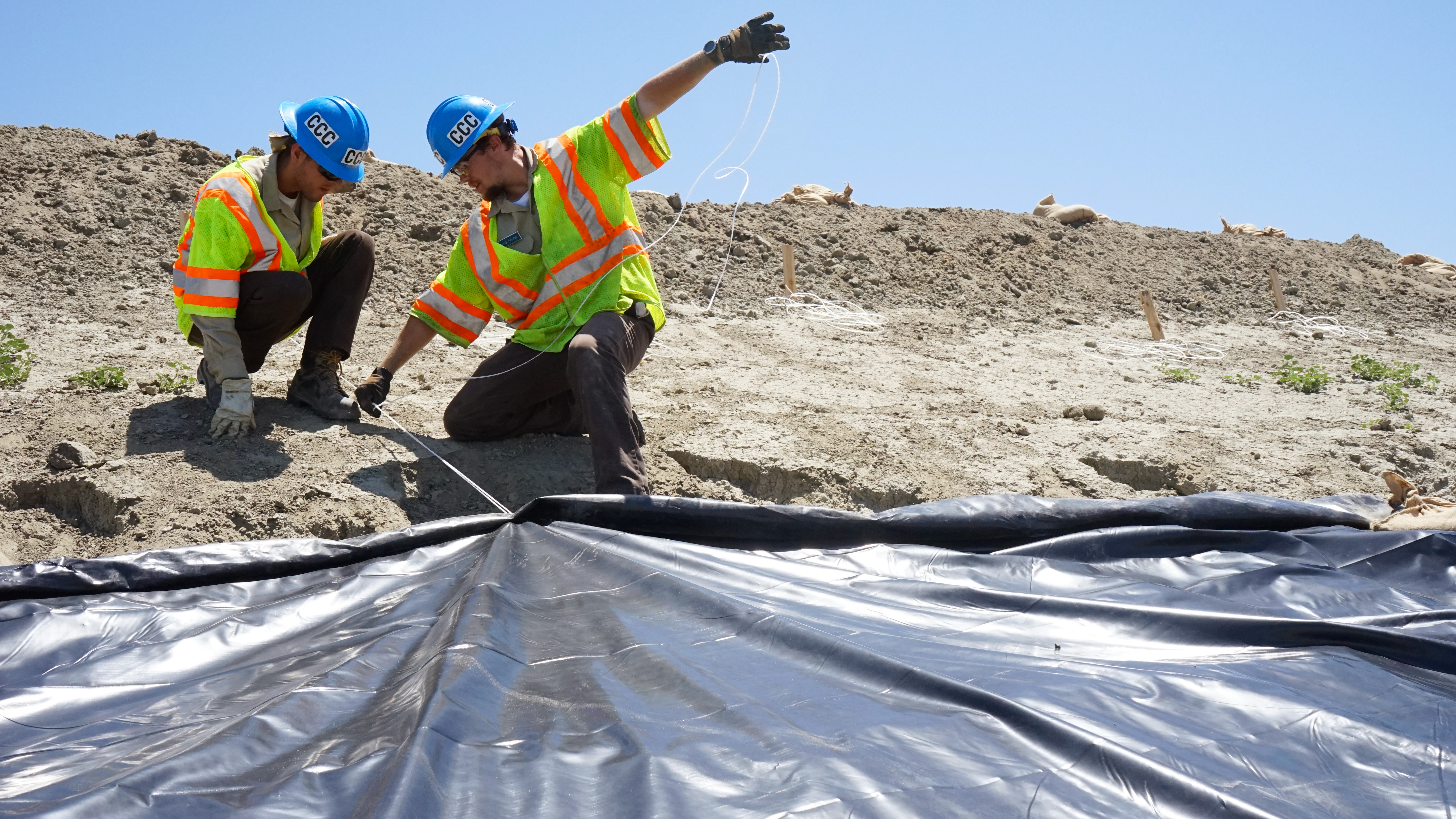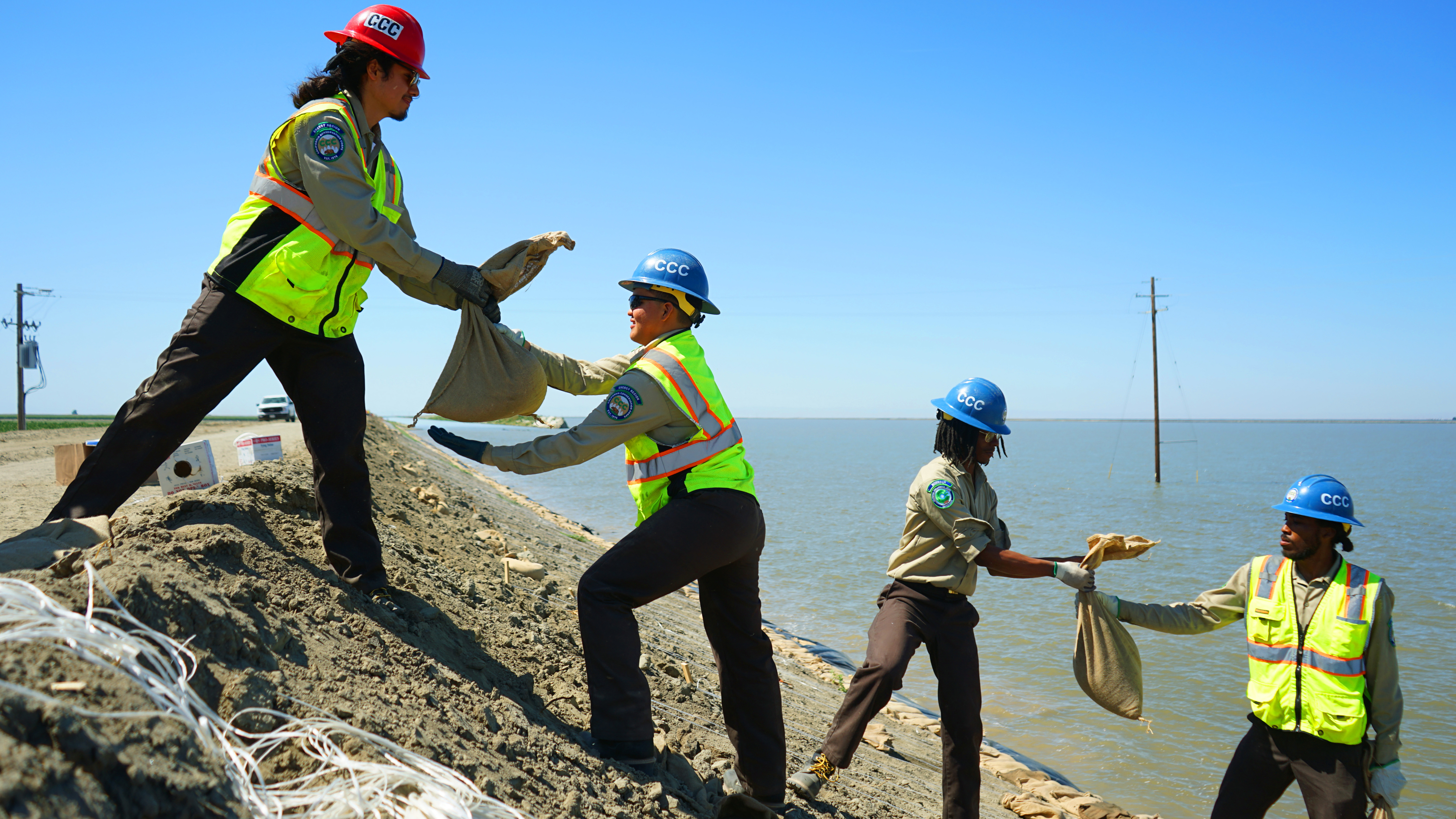Water, Sand & Sun: CCC Steps Up During Flood Threat
As temperatures rise, California Conservation Corps Corpsmembers rush toward a lake most people have never heard of, let alone seen. Tulare Lake, in the San Joaquin Valley, was once the largest freshwater lake west of the Mississippi River. Corpsmembers are now along its banks, not for a vacation, but because residents are counting on them to protect their communities from more flooding.
“You see acres and acres everything is just flooded,” says Corpsmember Eberly Alcala. “It looks like a whole ocean. It’s crazy to even think about how that water got here.”
For decades, Tulare Lake has been dry, with no standing water present. Driving past Corcoran, about 50 miles south of Fresno in Kings County, you would see wheat, tomatoes, pistachios, and other crops growing in the historic lakebed’s fertile soil. Now, the record-breaking Southern Sierra snowpack is rapidly melting, refilling the basin. To limit further flood damage, Corpsmembers are in the field working 10-hour days on the levees adjacent to the lake.
“By protecting this levee right here, we’re protecting all the pistachio trees and the infrastructure from flooding,” said Corpsmember Jocelyn Reyes. “There’s so much to it, placing the sandbags in the right order, the flap facing the right way as well. It’s quality over quantity, that’s for sure.”

San Diego Corpsmember Jocelyn Reyes, left, hands a sandbag to Mia Almanza as their crew chains sandbags into place during the flood response along Tulare Lake.
Jocelyn is one of more than 100 Corpsmembers from nine CCC crews who are responding to the call for help. From San Diego all the way up to Fortuna, these young adults – ranging in age from 18 to 25 – are installing more than seven- miles of a flood fighting method called wavewash protection. This work requires laying out plastic liner called visqueen, filling more than 70,000 sandbags, and securing the materials in place. It’s no easy feat and requires both mental and physical grit.
“It’s really brought our team closer together as individuals,” Reyes said. “We’ve found our groove and we love and protect each other. So, it’s been a great experience. This is all for a good cause.”

Two San Diego Center crews work together to lay out visqueen and secure it to the levee just outside of Corcoran in Kings County.
California Department of Water Resources and Cal OES requested the Corpsmembers begin work on May 16, with the plan to finish by June 9. The wavewash protection will help reduce the threat of erosion and additional flooding and should stay in place for more than a year. The water in Tulare Lake could remain for more than two years.
“Flood Response in California this season is an all-hands-on-deck response across state agencies,” says Gary Lippner, deputy director of Flood Management and Dam Safety at the Department of Water Resources. “We want to thank the Corpsmembers at the CCC for coordinating operations closely and working to rapidly respond to areas like the Corcoran levee to protect communities and property threatened by floodwaters.”

San Diego Corpsmember David Falos teaches Corpsmember Jorge Brizuela how to properly tie twine to a stake and visqueen sheeting.
“It gives you pride knowing that you’re helping out, especially with this massive farmland that we see flooded here,” says Corpsmember David Falos.
The Tulare Lake assignment is one of dozens of flood calls Corpsmembers responded to since atmospheric rivers hit January. When not responding to floods, the crews work on forestry, wildfire resilience, trails, and other natural resource projects.


